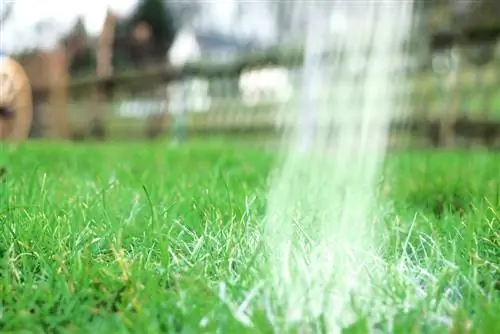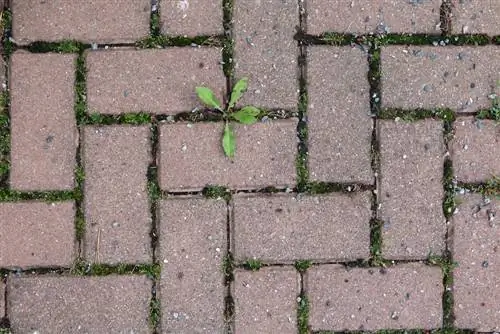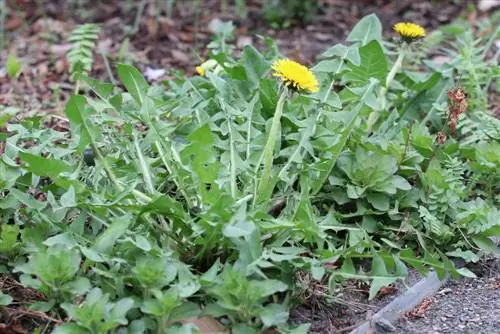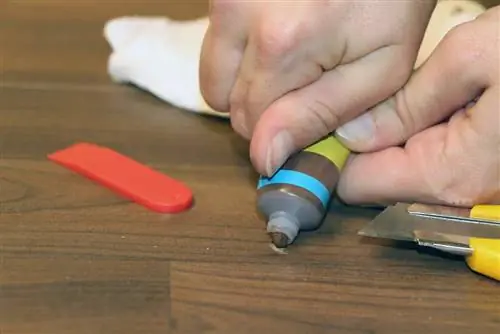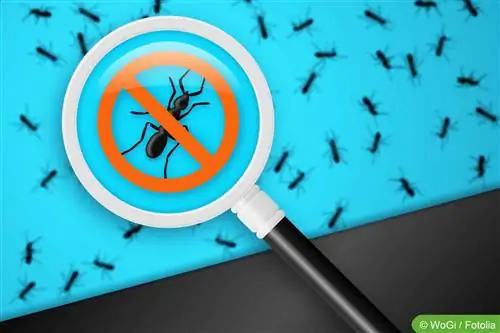- Author admin [email protected].
- Public 2023-12-17 03:39.
- Last modified 2025-01-24 12:45.
Scarifiers, blue grain, coffee grounds, lime, vinegar and the like are often recommended home remedies or measures for removing moss from the lawn. But what really helps and what can do more harm?
Prevention
The best way to keep the meadow free of moss is to prevent unwanted growth. This can be achieved through several measures and means:
Regular mowing
If the lawn is kept short and mowed regularly, the grass plants become denser and both weeds and mosses have less chance of growing in between. During the gardening season you should mow at least once a week.
Adapted fertilization
Strong lawn plants are less likely to let weeds and moss through. Appropriate fertilization during the growth phase is therefore crucial for preventing mosses.
Verticutting
The so-called scarifying process involves pulling sharp blades through the bottom of the lawn. On the one hand, this cuts through the roots, which stimulates new growth. On the other hand, the soil is loosened and the mosses are torn out. This allows water and nutrients to penetrate better. This in turn also contributes to the good supply of the plants and can not only prevent moss infestation.
Bluegrain
Blue grain fertilizer is a chemical agent. Unfortunately, this can be irritating and should therefore only be used in such a way that neither people nor animals have direct contact with it. After spreading, the lawn should be watered well and not walked on for a few days. The fertilizer does not help against moss directly, but only as a strengthening of the grass plants.
Cola
Cola is often recommended as a home remedy for moss. However, this product should only be used on surfaces that can be cleaned and rinsed. For example, on stone slabs or on moss-covered walls.
Vinegar
A dilution of vinegar and water acidifies the soil - however, this solution can not only damage the grass, but can even encourage moss growth. Because mosses thrive very well on acidic soil.
Tip:
Tip: Moss-covered surfaces - such as paving slabs - can be cleaned very well with diluted vinegar essence or even milder types of vinegar if the solution is applied to the affected areas and brushed off and rinsed off after a few hours.
Coffee grounds
The dry remains of morning coffee have several advantages as a home remedy for preventing and destroying moss. These are:
- biological and easily degradable
- cheap
- non-toxic
- has a fertilizing effect on the grass plants
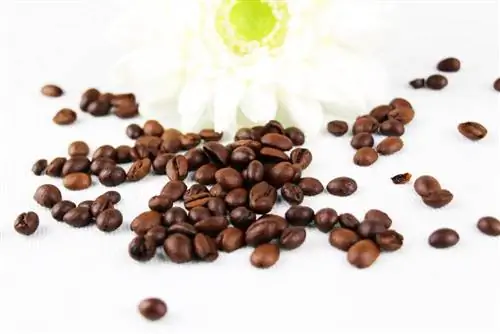
One disadvantage, however, is that the moss infestation is not combated directly by the coffee powder, but rather only fertilizes the grass and thus strengthens it.
Lime
Moss grows worse on alkaline soil. Lime-containing fertilizer is therefore well suited for removing moss because it increases the pH value of the substrate. The important thing here is:
- even distribution, for example by a spreader truck
- Water or sprinkle the meadow thoroughly afterwards
- Ideally scarify the grass beforehand so that lime and water can penetrate better
Light
Mosses grow primarily in dark, light-poor areas. If the meadow is shaded by hedges, trees, other plants or buildings or if there is clippings on it, the conditions for moss growth are ideal. As countermeasures, we recommend cutting larger plants or regularly caring for the affected areas to prevent the moss from spreading. In addition, there should be no waste
S alt
S alt is often used to specifically combat weeds, for example. Because it is inexpensive and easy to use. The problem with this use, however, is that the soil becomes s alty, which is also harmful to the lawn and all other plants. If you want to get rid of moss but don't want to cause permanent damage to the garden, you should avoid this home remedy or only use it on paths and not on the meadow.
Sand
Using sand to combat moss in the meadow may seem strange at first, but it is one of the simplest, cheapest and most efficient methods to permanently remove the annoying plants. The procedure is also simple:
- Mow the grass briefly and sprinkle it.
- Fill construction sand into a spreader.
- Set the output regulation of the spreader as much as possible.
- Distribute sand so that only the tips of the blades of grass are visible after dispensing. Alternatively, you can drive across the meadow several times.
Since moss plants thrive particularly well in moist areas and on clay-rich soil, they are literally suffocated by the dry sand. In addition, sand can help to permanently loosen the soil and thus promote the growth of grass roots and strengthen the plants as well as curb the growth of moss.
Soda
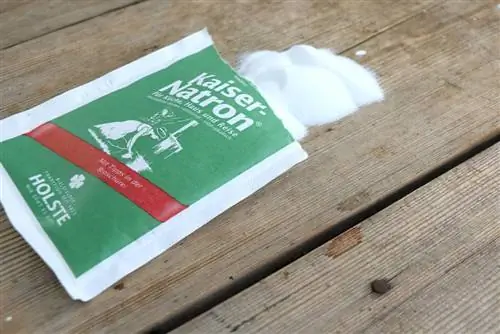
To curb moss growth in the lawn, sodium carbonate and washing soda are sometimes recommended as a solution in combination with hot water. However, these products are only suitable for cleaning moss-covered and washable surfaces such as paving slabs or walls. They should not be used on the meadow because, like s alt, they not only remove the moss but also damage the grass plants.
Calculations
If you don't want to buy or borrow a scarifier to get rid of the moss layer, you can also use a simple rake or a garden claw. However, it is very laborious to remove the unwanted plants by hand. In addition, the plants usually cannot be completely destroyed. However, this variant can definitely be chosen for smaller areas.

